
Job Search
Red Flag Issues for Job Seekers
What are the things that keep fashion industry professionals from applying to specific job listings?
StyleCareers.com conducted a survey of 600 fashion industry professionals to find out why they don’t apply to specific job listings.
In taking the survey, the assumption is that the person taking the survey is actively looking for employment and is qualified for the job being promoted. As such, the 20 reasons listed below pertain to the content of the job listings; salary, job title, requirements, branding, description, etc…
When viewing each chart consider the following:
The average ad on a niche job board gets a 9% conversion rate; that’s 9 applies for every 100 views. For simplicity’s sake, we’ll use 10% instead of 9% to make the math easier.
Let’s say a job listing gets 400 views. At an average conversion rate of 10%, that ad should get 40 applications.
The Red Flag percentages on the pie charts (below) represent the number of people who WILL NOT apply. If the Red Flag percentage is 50%, that means the employer can expect 50% fewer applications. Those 40 applications mentioned in the previous paragraph become only 20.
The Yellow Flag percentages represent the number of people who may or may not apply to a particular job listing. For the sake of simplicity, let’s say that a Yellow Flag number means that half of the people who may or may not apply, actually do. Continuing with the 400 job view example, if 20% of the respondants selected the Yellow Flag, 10% won’t apply.
The 50% from the Red Flag group is added to the 10% of the Yellow Flag group resulting is 60% fewer applications.
Low Salary
The biggest factor in wether or not fashion industry job seekers will apply to a specific job listing is the salary. In short, when employers list low salaries in job listings, about 78% of fashion industry employers consider this a Red Flag Issue and will NOT apply.
Add-in half of the Yellow Flag candidates and a low salary on a fashion industry job listing is likely to reduce the total number of applications by 88.3%!
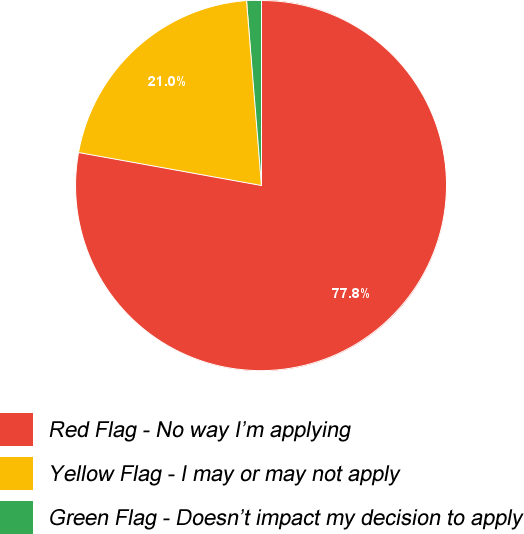
Bad Reputation
The old saying is that in the fashion industry, “everybody knows everybody”. While not quite literal, this saying isn’t that far from being true. Because of this, the second biggest Red Flag issue for fashion industry job seekers is the listing company’s reputation.
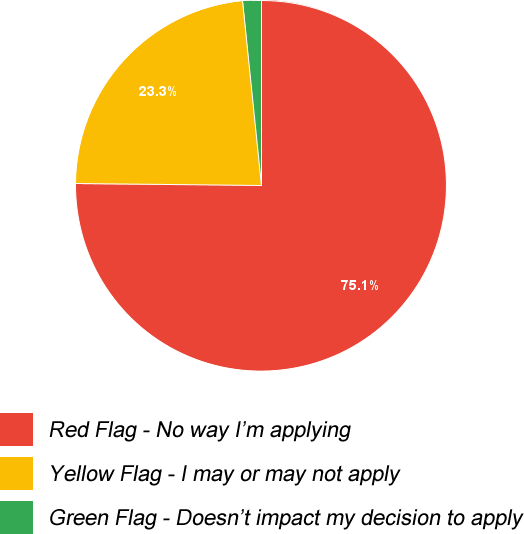
Salary/Job Title Mismatch
Similar to the Low Salary question on the survey, job seekers are VERY hesitant to apply to job listings where the Job Title and Requirements do not match the listed salary.
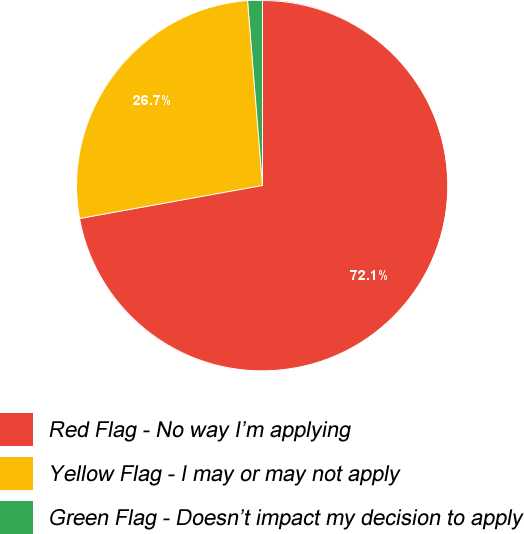
Unprofessional Job Listing
Short descriptions, run-on sentences, typos, poor spacing, odd bolding or fonts, etc… are examples of things in unprofessional job listings. These examples, and more, will keep almost 70% of job seekers from applying to an ad.
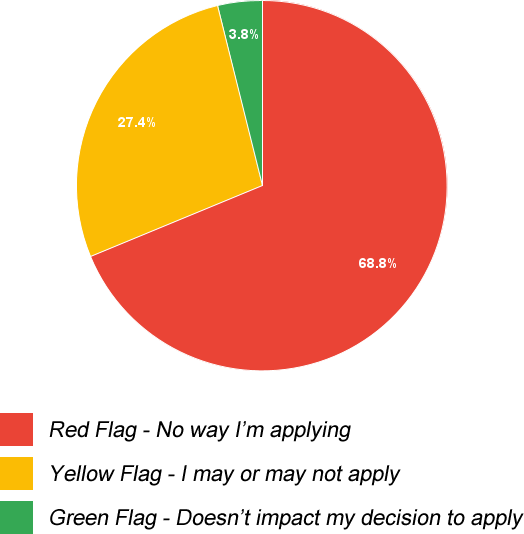
No Information on the Company or Its Products
As an example, consider a job listing for a Designer. In that ad, it doesn’t list what the candidate will be designing, Women’s? Men’s? Juniors? Young Men’s? Childrens? It doesn’t list tops or bottoms, knits or wovens. The reader doesn’t know the market segment; couture? designer? discount?
Further, many companies leave out details on their organization making it almost impossible for the candidate to do their own research.
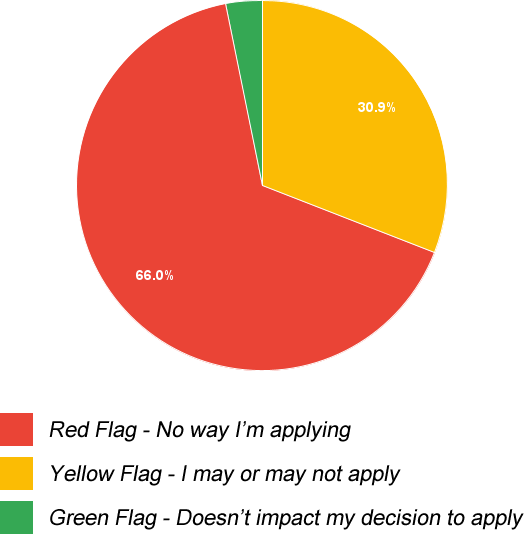
Company has a bad COVID reputation
The companies that handled the pandemic poorly are paying for it in terms of talent with almost 58% of respondents claiming they wouldn’t apply to a job from a company that was rumored to done a bad job with COVID. It is important to note that with reputation issues, not everyone who sees a particular job listing knows about that company’s reputation. Unlike a low salary or an unprofessional job listing, reputation does not automatically result in fewer applications; just fewer applications from those who know.
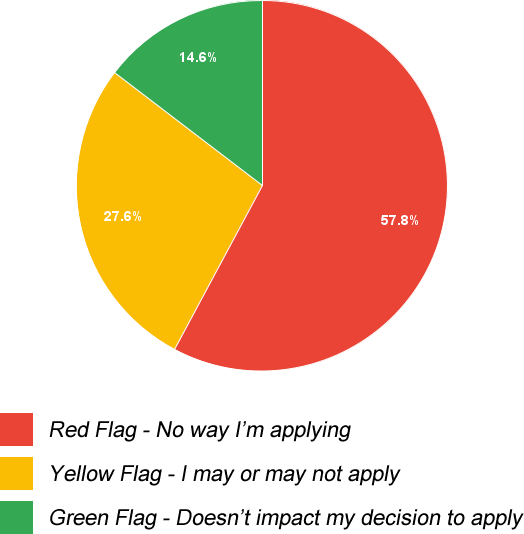
Difficult to impossible to find information on the company
Lesser known companies, new companies and foreign companies are at risk of getting 56% fewer applications than companies that are easily researched.
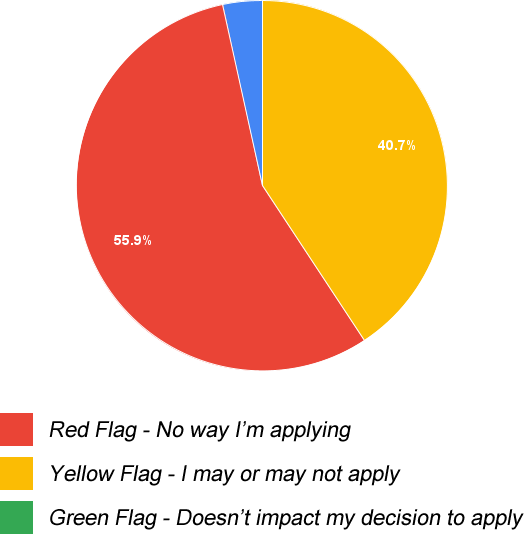
No company website
Not having a company website, on average, keeps 51% of the total candidate poole from applying.
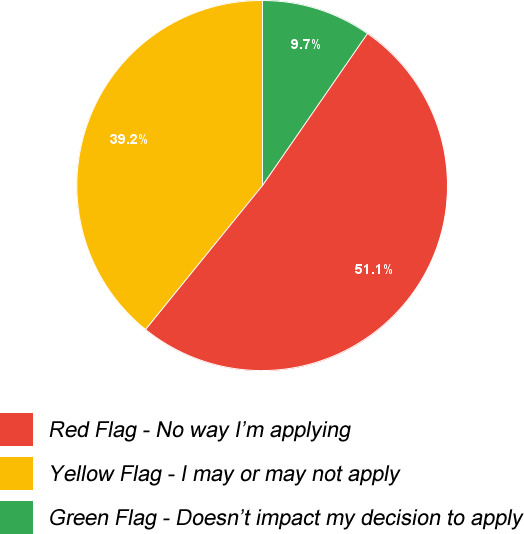
Cumbersome application instructions
When ads ask candidates to provide extra information like including samples of your work or writing a paragraph, they can expect 37% fewer applications. This is particularly true with job seekers who are currently employed (no time, intend to do it later, etc…)

Vague job description
Often viewed by job seekers as “fake” or unprofessional, job listings with vague descriptions get a lot fewer applications.
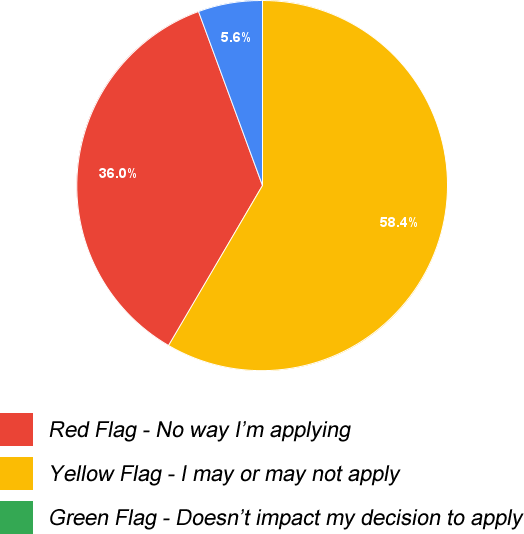
Little or no information on company benefits
Benefits are important to job seekers. Companies that provide healthcare, dental, vision, 401k, etc… are preferred by fashion industry professionals.
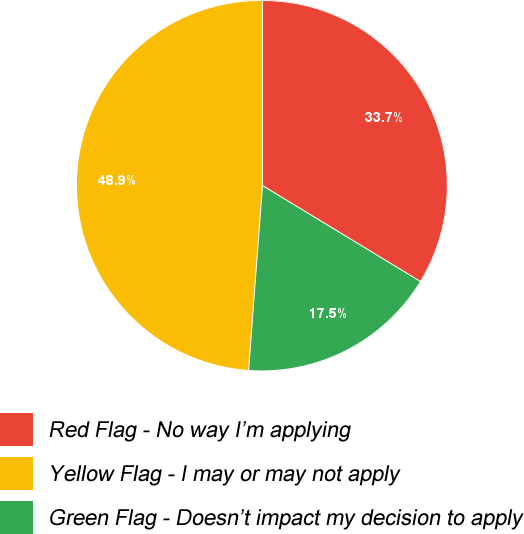
Requires candidate salary information with application
The irony of this stat is that candidates don’t like to apply to job listings which request salary requirements upon application.
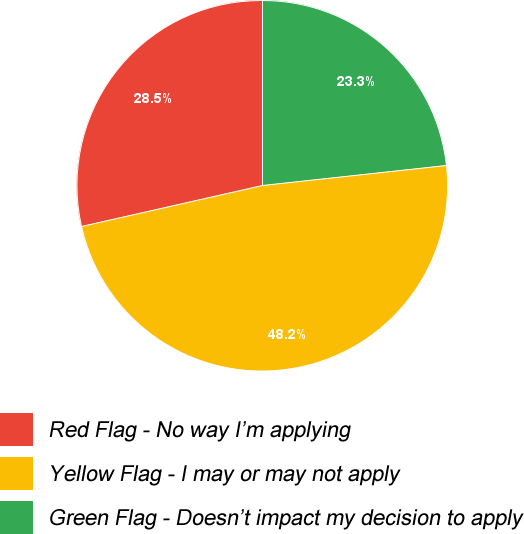
Lack of work from home benefits
If you take ALL of the Red Flag candidates and HALF of the Yellow Flag candidates, the lack of WFH/Hybrid benefits can reduce total applications by over 50%!

The ad is confidential
Confidential ads scare many candidates from applying. Not necessarily the unemployed job seekers but those who are currently employed. The fear that someone from their office might find out they are looking for a job is enough to keep significant number of fashion industry professionals from applying to confidential ads.

Little or no branding
Candidates expect a professional presentation of job listings. Companies need more than just a logo to keep up with candidate expectations. Images, social links, about us pages, etc… all add-up to more applications.
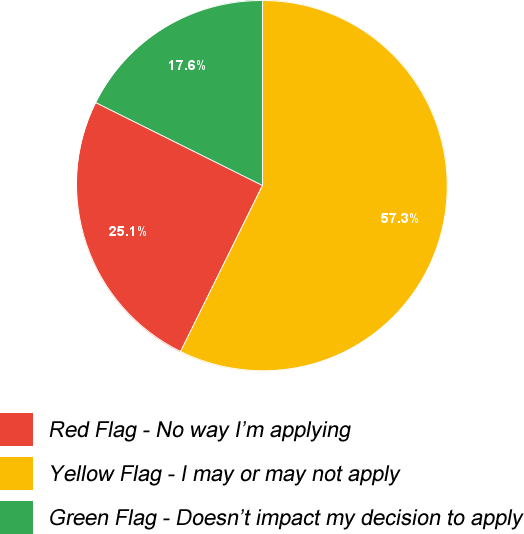
Difficult to use Applicant Tracking System (company’s site)
The more difficult the ATS is to use, the fewer applications a company will get. While that is pretty obvious, most people don’t realize that FEWER currently employed candidates (candidates who have jobs) are MUCH less likely to submit their applications.
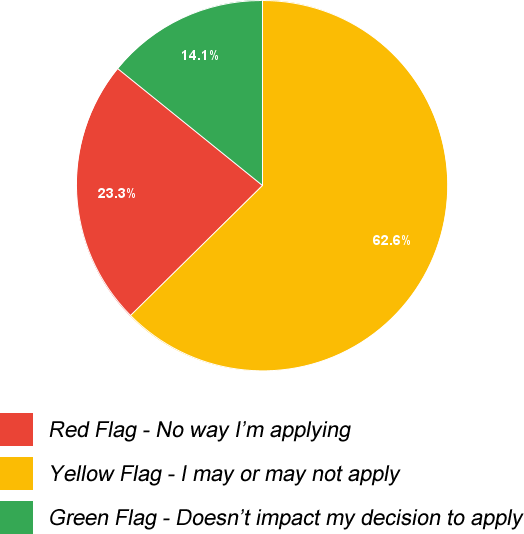
Little or no information on the company’s culture
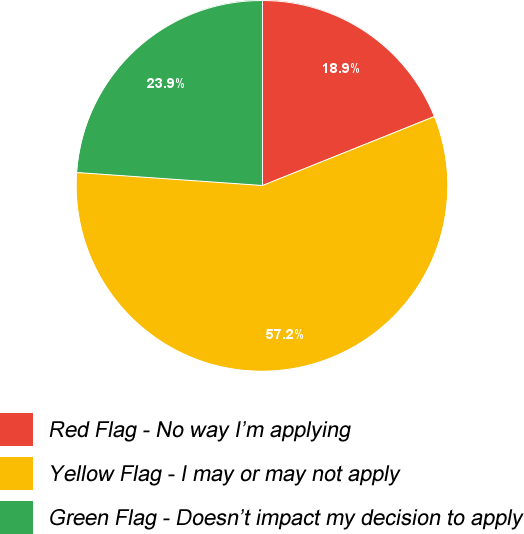
No salary listed
Job seekers don’t like to provide salary when applying but they also don’t like when a salary isn’t listed in the ad. Irony? With all of the Red Flag and half of the Yellow Flag responses, employers can expect 44% fewer applications when they don’t list the salary in the ad.
Considering that a low salary or a salary that doesn’t match the job requirements has a MUCH higher Red Flag rate, companies that have low salaries are better off NOT listing them in their job listings.
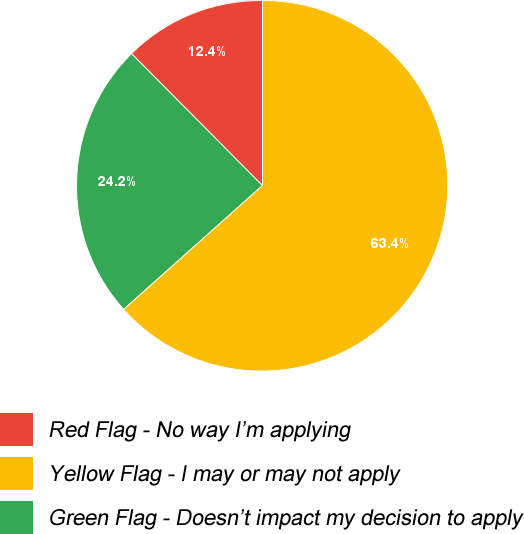
Company has a COVID vaccine requirement
Considering that almost 70% of the fashion industry is already vaccinated for COVID, this number is not a surprise.

Job description is too detailed
This is an opinion but, we are guessing that the 8.8% of fashion industry job seekers who see a super-detailed job description as being an issue do NOT want to be micromanaged.
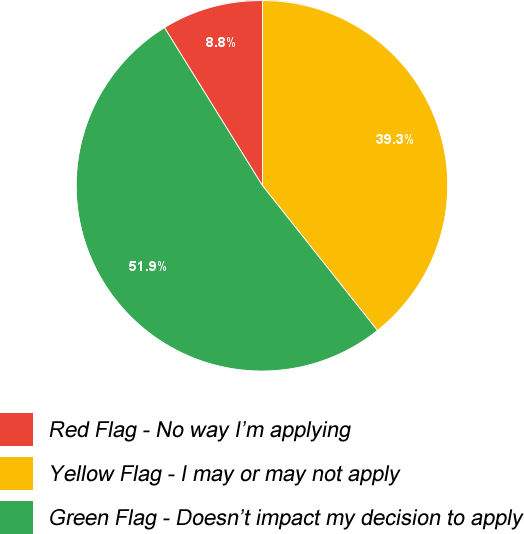
Chris Kidd is the owner of StyleCareers.com, StylePortfolios.com, StyleDispatch.com, FashionCareerFairs.com and FashionRetailCareers.com.



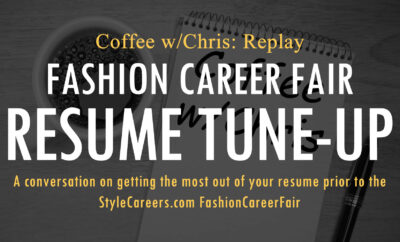


You must be logged in to post a comment Login